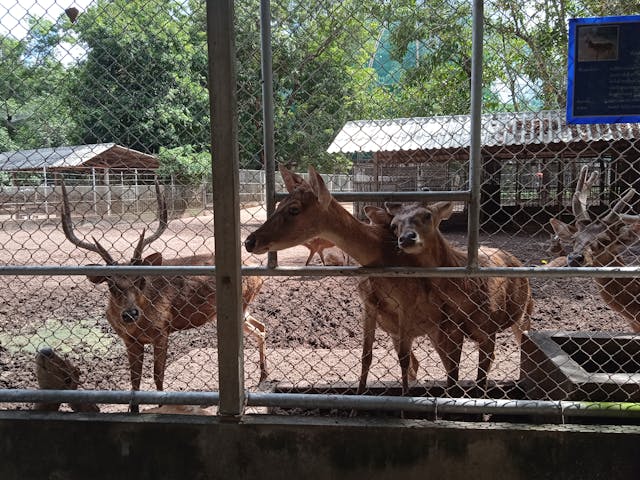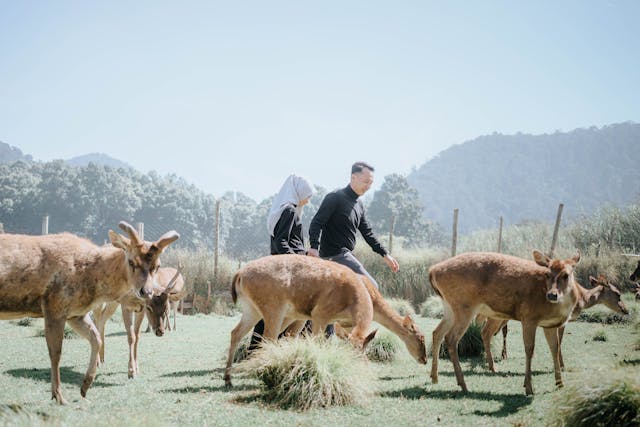Are you keenly interested in establishing a deer farm? Several critical and most important facts you have to know about the deer before going to set the farm for deer.
After searching through various authentic sources, we have enriched with several unknown facts about the deer farm which have been discussed in the succeeding section.
Now we are trying to delve into the detailed information about deer farming through the website farm.ws, a farm-related platform that offers you more than you can expect!
What Is A Deer Farm?
A deer farm is a fenced area of land used for grazing that is home to livestock-raised deer species, such as elk, moose, reindeer, or particularly white-tailed deer. Technically it’s referred to as a ranch.
Some Important Facts About Deer And Deer Farms:
Before establishing a deer farm, we have to understand some crucial facts about the deer and deer farm too. Here are the details of various unknown but important things regarding deer and its farm.
The History:
In the late 1800s, the white-tailed deer population was very low due to extensive clearing of land, loss of habitat, and unregulated hunting.
Although the deer are not native to New Zealand, large-scale commercial farming of deer originated in New Zealand. Deer were first brought to this country from England and Scotland in the mid to late 19th century. It was released mainly in the southern Alps and surrounding foothills. These non-native deer were regarded as pests due to their impacts on the native forest by the middle of the 20th century.
Among more than 90 species, the white-tailed deer has a crucial role in the history of America. These types of deer were used extensively by Native Americans and early settlers for clothing and food.
The population of the white-tailed deer has rebounded dramatically in the past several decades due to changing land uses, Stricker game laws, and a deficiency of large natural predators. White-tailed deer are the most important game animal in the United States.
The pest was converted into an export earner in the 1960s by exporting venison from wild deer. It was a great opportunity for industry pioneers to build the base. In the early 1970s, it was started to capture live deer from the wild and farming them. Hence, a new industry was established and rapidly spread throughout New Zealand. Later, it has been spread throughout the Canada and United States and now most of the country in the world.
Deer Species:
There are more than 90 species of deer in the world. The most common species in the US are white-tailed and mule deer. A male deer is called a stag or buck and a female deer is called a hind or doe. A young deer is called a calf, fawn, or kid.
Life Span of Deer:
The life span of deer is more or less than 6 years. Female deer’s life span is more than that of male deer.
The Habitat Of The Deer:
A transitional area is the ideal habitat for a deer. It is the area where open land meets the forest. The open land provides a wide variety of plant life for foraging whereas the forest provides the cover and shelter a deer needs for protection.
The Varying Diet of Deer:
The diet of the deer changes with their habitat or seasons. They are herbivores that browse on the fruits, leaves, and stems of tall plants, graze on the grass, lower-lying vegetation, leafy green plants, flowers, buds, seasonal crops, and even corn and nuts.
The Vision Of Deer:
The advantage of deer’s eye location is that they can view 310 degrees around themselves. This wide view allows them to be aware of their surroundings.
However, they are not able to view a particular location with both eyes. It causes the deer to have a very poor depth perception. Additionally, they also see a lower resolution than humans and are believed to be colourblind.
The Sense Of Smell:
They use their sense of smell as a weapon for detecting approaching danger. Their moist nose allows them to pick up the faintest of odours. They can detect the odour of approaching danger several hundred yards away.
Hearing Power Of Deer:
The hearing power of deer is superior to that of a human. They can easily detect the most indefinite of sounds and their hearing is so sensitive that can easily determine how far away the sound was made.
After hearing a sound, they will instantly turn their head and set their ears in the direction of the sound. Generally, they focus all of their attention on looking, smelling and listening for any more signs of danger. They will go back to normal routine, after checking the area several times by smelling, watching or hearing.
The Lifestyle:
Depending on the seasonal changes, the white-tailed deer’s behaviour and movement vary drastically. They like to travel separately and do not mate for life and live except for the time to mate. Generally, males like to travel with males for most of the time in a year. But they head out on their own to reduce competition once mating season arrives.
On the other hand, female deer spend alone for most of the time in the year until their kids are born. The male and female offspring are likely to stay with their mother for about two years, although the males are separated earlier and once they find food on their own. After separating from their mother, the males can travel about six to eight miles to find their territories for mating.

Behavioural Changes Of The Deer:
Deer communicate with each other through body language, sounds, and scent markings. They use a combination of grunts, bleats, snorts and mews to alert others of danger and to establish dominance. They also indicate with their tails, ears, heads and hooves to communicate with each other and to ward off predators. Ultimately they communicate their location through the secretion of chemicals through hooves, saliva and urine.
Grand Canyon Deer Farm:
Grand Canyon Deer Farm is located at 6769 E Deer Farm Road in William, Arizona, AZ 86046-8419. It is about 25 minutes west of Flagstaff and 8 miles east of Williams. This farm is the perfect place to visit for all of any age and is excellent for animal lovers. It is the wonderland of the petting zoo and deer farm with a 10-acre area and is the home of various animals including Ilamas, coatimundi, peacocks, bison, camel and deer of course. Walk with deer and feed from your own hands, kiss a camel, pet a goat, chat with a parrot and blast as an animal lover. Believe me, this is a great place to visit for lifetime memories!
The farm is privately owned and does not receive any funds from any other sources. Hence ticket sales go directly towards feeding and caring for all animals on this farm.
The Grand Canyon Deer Farm has a summer and winter schedule and remains open daily from March to October. It may close during bad weather. So be sure to check before planning to visit there.
Just a few things to be kept in mind before visiting. No plastic allowed outdoors including bottles, straws, or fountain drinks. Outside food is not permitted on the farm, but picnic tables are available under the pine trees if you’d like to carry your food. Also, there is a gift shop and it is wheelchair accessible.
How To Build A Sound Operation Of Deer Farming: Some Essential Steps
The following important steps are to be followed strictly to build a sound operation of deer farming including
- Obey the rules and regulations of local and regional agencies which regulate ownership, transportation, propagation, and sales of the deer species and their products.
- Capital investment to start the farm.
- Proper planning and layout of the farm.
- Building pens and fencing around the selected area.
- Feeding program and nutrition.
- Skilled manpower to look after the species.
- Transportation facilities.
Conclusion:
In the last but not the least word, we must say that it is a challenging task to build a deer farm. All the countries in the world are not permitted to build the deer farm due to some regional restrictions. The important considerations mentioned in this article must be kept in mind before constructing the farm.
I hope you have already visited the website farm.ws for this kind of interesting content. Have a closer look at a few of these interest areas and share your thoughts with us. Maintain communication!
FAQs:
A group of deer is known as a herd.
New Zealand is the largest producer of the flesh of deer or farm-raised venison.
Deer farming is not allowed in India as it is reserved as a “Danger Category”.
